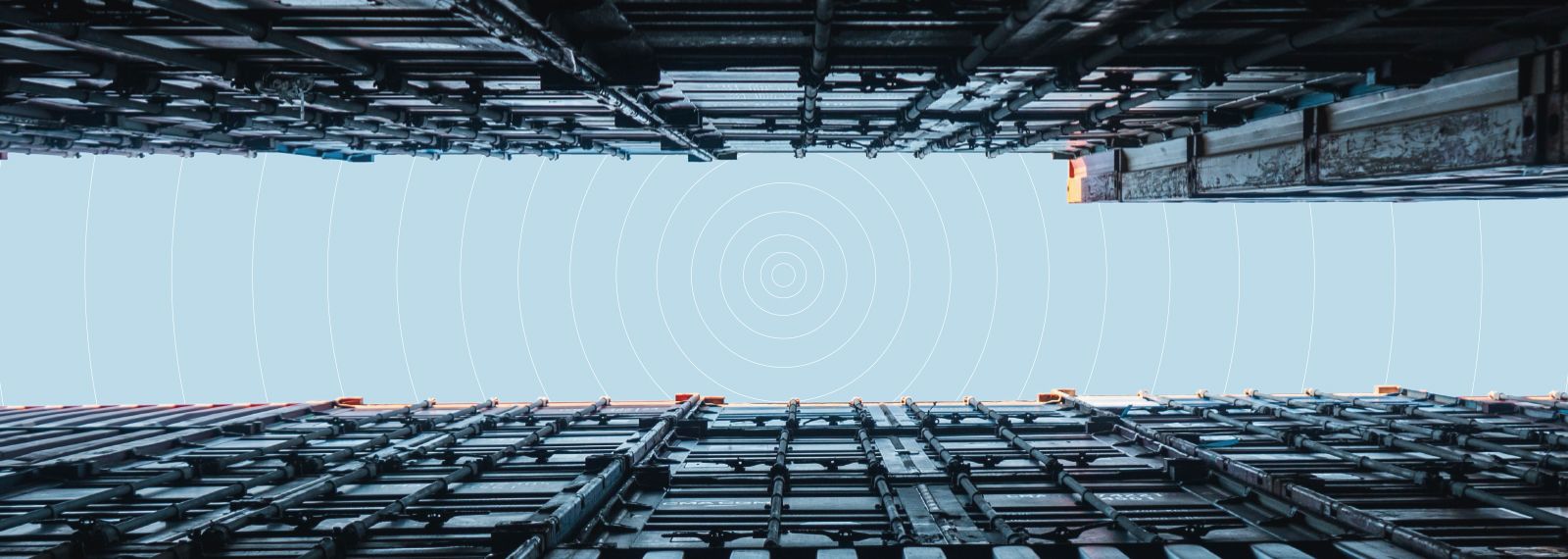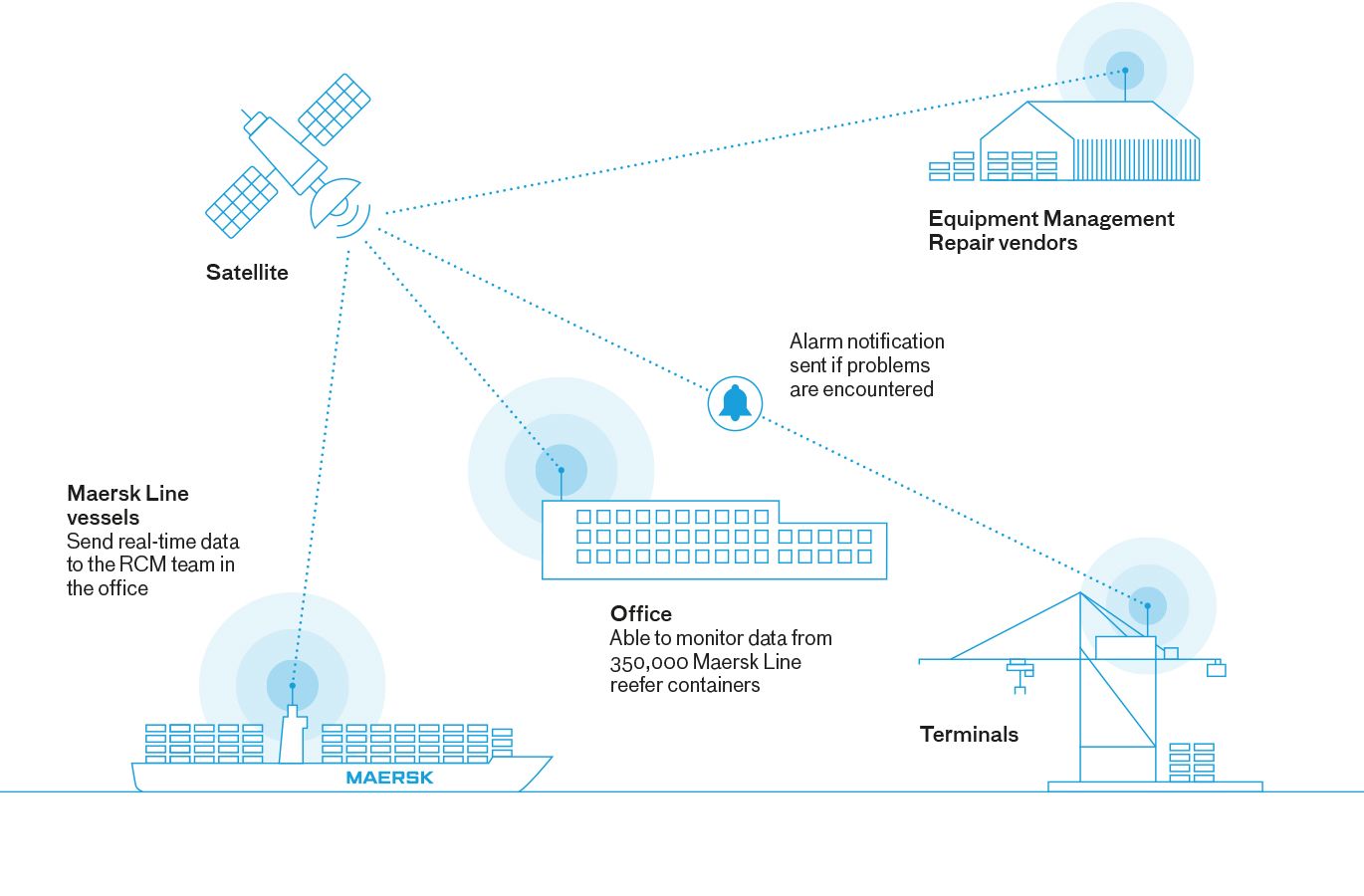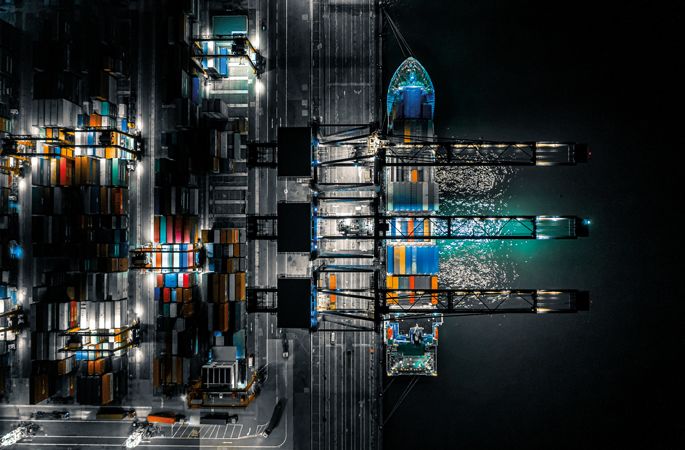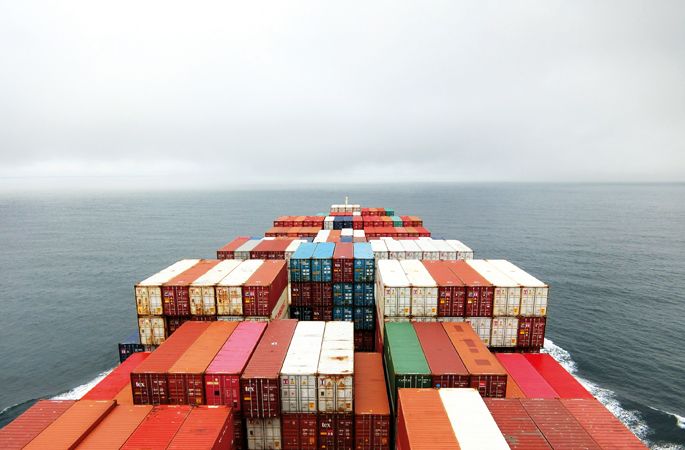
Digitizing Trade – The Role of IoT in E2E Logistics
Today, there are many examples confirming that the shipping industry not only moves goods but creates competitive value for its customers through constant innovation of products and services. In fact, shipping companies have moved from a traditional ocean carriage to multimodal product offerings which also include a range of fulfillment services such as cold storage, packaging, and custom clearances – slowly capturing the entire end-to- end (E2E) value chain. The industry touches everything from moving bananas from Central America to the supermarkets in Europe – our clothes from Bangladesh to America, our COVID medicines from India to Africa, even to moving expensive yachts from China to France. Most companies in the Transport and Logistics sector (T&L) therefore compete at different legs of the transport and fulfilment services, and at several critical junctures in the market – at the nexus between transportation products and integrated solution offerings. For the A.P. Møller group in particular, the goal to become a global integrator of products and services is relevant for both long-term strategic customers and for the short-term market.
A.P. Møller Mærsk is part of a larger A.P. Møller group which also includes Danske Bank and Mærsk Tankers. The Mærsk name – synonymous with ocean shipping for decades – is a market leader in capacity and service offerings within the ocean space. At end of year 2022, the company’s market capitalization was $265 Billion. Mærsk’s strategy has been to build upon this foundation and offer integrated solutions for smooth and optimised cargo flows across all steps of the supply chain. In a nutshell, the company seeks to create value for customers in the form of better supply chain outcomes, increased transparency and control, and ultimately lower end-to-end costs. Notably, this ‘Transformation” or “Integrator” strategy is unique in that it seeks to creates customers and financial synergies between ocean, landside, and air logistics. This in turn is meant to create physical assets connected to new digital platforms, an imperative powered by M&A in recent years and made feasible by steady cash flow, reported at $16 Billion in 2021, up from $4.6 Billion in 2020.
The transformation towards becoming an integrated transport and logistics company was launched in 2016. This so-called “integrator strategy” has included digital transformation, and accelerated during the pandemic, which clearly upended the global supply chain. Within this volatile supply chain environment, logistics companies including Mærsk saw the benefits of Internet of Things (IoT) in mitigating some of the global supply chain challenges, including implementation in maritime setting; warehouse management; improvement in last mile delivery; and predictive analysis. Clearly, the company pivoted around next-gen technologies, big data, and innovation to transform into an end-to-end integrated logistics company. But what does this really mean, for Maersk in particular, for the industry in general, and for supply chains globally at the most macro level? This is not a trivial question: As companies are slowly adopting more IoT devices across their value chain aiming to solve some real supply chain issues which impact customer delivery promises, the real task is to understand how to envision the end state of their ecosystem – essentially understanding where they want to play and how to win. Given that the rate of adoption and implementation has generally been slow given the heavy asset base, it is critical to lay down a clear path for digital adoption, as any wrong turn can set back an organization by several years.
Thus, while inertia in the logistics industry has always been a challenge to overcome when it comes to adoption of digital technology, there is a clear digital imperative and a bright future ahead
Thus, while inertia in the logistics industry has always been a challenge to overcome when it comes to adoption of digital technology, there is a clear digital imperative and a bright future ahead. A selection of critical advances in how innovation in IoT in particular is entering the shipping industry, is therefore summarized briefly below.
The Role of IoT to Date
Services, tools, platform, and strategy are of course rooted in providing the best customer experience possible. This supports customers to focus on developing their core business. In an increasingly complex supply chain environment, this dependency – on a third party for logistics – can only come be successful via use of the digital solutions and harnessing the power of data analytics to support customers with the information they need to run their businesses.
The IoT of the sea

Internet of things (IoT) forms an integral part of this digitization journey, connecting as it does assets and cargo, providing actionable information to support delivery promises. Most significantly, the suite of technology that enables IoT also enables new ways to differentiate products and services. Think about the following for example:
- Fleet-Based IoT
The main scope of Fleet based IoT is centered around the container vessels. Fleet based IoT devices capture vessel data to optimize energy efficiency and support de-carbonization, crew safety, fire detection and machinery monitoring. - Cargo Monitoring -Based IoT
These solutions that provide containers with a ‘voice’ and the ability to inform employees and customers about exact location and status, with equal coverage both on land and at sea. Information is consolidated and made available via online tools to customers as well as to staff. The solution provides proactive information, making it possible to address potential complications in containers that could otherwise impact delivery plan and/or the cargo itself. - Vessel and Analytics -Based IoT
This includes vessel monitoring and performance management. In addition, solutions placed in terminals and depots enable data detection related to energy optimization, fault detection, and resolution support data.
The role these type of IoT devices play is not limited to short term optimization. In fact, it allows for long term delivery promise enablement and creation of new business opportunities. Their impact can be seen in three critical areas –
Sensing and Monitoring
Capturing information across various aspects of supply chain, including monitoring environmental impact in the value chain. Naturally the highest concentration of IoT devices can be found here, as it is an area of direct control.Adaptive control
Interpreting captured information and decision-making basis analytics, including orchestrating changes to the supply chain based again on environmental changes. •New Opportunities
A broad category, that includes continuous improvements based on captured information, as well as ecosystem partnerships to enable wider market reach.
The role these type of IoT devices play is not limited to short term optimization. In fact, it allows for long term delivery promise enablement and creation of new business opportunities
At Maersk, for example, remote sensor monitoring products like ‘Captain Peter’ bring transparency to customers of their perishable cargo. This includes real time data, covering temperature, humidity, location – from the time the cargo is stuffed until its discharged in its destination. In much less than the next decade – and despite the current challenges (some of which are described below), it is clear that IoT related to adaptive control and new opportunities will continue to be robust.

What comes next? – An IoT Ecosystem or Something Else?
Despite the advances and the opportunities, moving hastily towards an IoT ecosystem should not be the immediate next step. The real opportunity is on identifying bottlenecks that today limit the flow of information; are barriers in the value chain; and where the complexity is expected to grow as trade grows. The three steps below are therefore ones that the industry can take to reach the true potential of an IoT and digital ecosystem, one that removes the otherwise next generation of barriers:
- Upgrading
In the case of Maersk, one of the challenges the company faces comes from its strength. In other words, while the company continues to grow inorganically (based on M&A), its legacy systems are likely to fall behind the technology it inherits. This then suggests uplifting existing systems and associated processes. This transcends any one organization’s boundaries. In fact, given the strategy of integrating E2E, it becomes crucial to ensure that a suppliers’ internal systems and assets continue to interact in an optimal way with customers systems, which are naturally progressing at their own pace. Failing to deliver this could lead to missed opportunities to innovate new products, and even potentially lagging product quality and delivery times which might sneak in due to inefficient handshakes in the supply chain. - Standardizing to Scale Up
In the integrator’s vision and anticipation of covering E2E logistics, it is clear there is an imperative to work with partners and competitors. However, to provide a truly E2E product that is traceable and actionable through IoT, all the multiple legs of any given transport will be required to share the same framework, able to talk between different proprietary systems. Today, lack of standardization is one of the reason inefficiencies exist in the supply chain. IoT devices and associated frameworks are not immune to this challenge and will require standardization across the entire sphere of logistics. While it is clear that standardization will not benefit any one organization unduly but all equally (particularly in terms of reduced costs and improved service), the challenges to making this happen include conflicting priorities and inertia towards initial investment that could be sizable, including and extending to SME clients. - Moving away from Only Optimizing: Looking for Business Opportunities
Maximizing the value generated through IoT applications means being able to identify and take advantage of new business models within the ecosystem. It is only possible by establishing a mechanism of continuous improvement, including reinvesting the captured information into new ways of generating value through the data captured from IoT devices. This in turn requires applications that not only include the company’s operations but also integrate its customers into a product ecosystem. Maersk ‘NEONAV’ is one such tool created to support an entire supply chain and integrate a wide range of information from various sources enabling real time visibility, control, decision making. An application of this is the streamlining of the inventory management via data across multiple systems, creating a holistic view across all locations.
Across the above of potential “fixes,” it is critical to recognize that the sector is quite hermetic, and far from being designed as open platforms for collaboration. Systems are disconnected with customers and are most often disconnected from other T&L service providers. To realize new business models and new revenues, supply- and demand-side systems need to work together to smoothly process information. This integration underscores the need for stronger partnerships and is an area that will require special attention. Innovative IoT solutions require cross-industry partnerships, and the success of any given initiative may depend heavily on the choice of partner and the values on which the company competes. An interesting example of success, especially compelling given the context, is ‘Tradelens’ which is a cross-industry, cross-entities document sharing -platform that speeds up the workflow, brings visibility, and lowers costs.
Innovative IoT solutions require cross-industry partnerships…. creating industry wide standards for data and interfaces, interoperability of smart container solutions, digital improvements in operations to reduce wastage of resources, reduced greenhouse emissions, and documentation related to cybersecurity
Imagining Innovation and the Digital Future
IoT devices are not only enabling new business models and creating more revenue opportunities, but also feed into around decarbonization. In the case of Mærsk, the company in fact owns approximately eighteen percent of the world’s global fleet, and therefore can contribute significantly towards decarbonization via efficiency management. Under fleet IoT devices, ‘energy efficiency applications’ serve the purpose of monitoring and optimizing the performance of the ships and supporting decarbonization journey. This includes, for example voyage simulator connected to various IoT devices onboard and at shore that provide the most fuel-efficient route for a ship to take in any weather condition.
Maersk also transports around 27% of worlds refrigerated containers and 25% of the world’s food commodities. Through innovative supply chain products including cold chain solutions lies a wide spectrum of digital tech including IoT devices on refrigerated containers and in warehouses that contribute by providing real time info on condition of food, thereby supporting the organization’s objective of halving food loss that occur during transit. In one recent example, Mærsk participated with Wageningen University and several customers to create a prediction model (a digital twin) to create and trial food quality related to data from container monitoring.

Despite these successes, inertia in the logistics industry has always been a challenge to overcome when it comes to adoption of digital technology. There is, however, a digital imperative and a bright future ahead. Despite volatility in global GDP, the extended impact from COVID 19, and rising trade tensions between states, top shipping companies in 2010 formed an association (DCSA- Digital Container Shipping Association) to establish IT standards across the industry. Their purpose – facilitate digital connectivity and seamless data communication that anyone can leverage. This body is focusing on creating industry wide standards for data and interfaces, interoperability of smart container solutions, digital improvements in operations to reduce wastage of resources, reduced greenhouse emissions, and documentation related to cybersecurity.
It remains a challenge for Mærsk and other players in the sector to capture the values of integration, connectivity, decarbonization, and growth all together due to global disruptions that continue to undermine service delivery, and the lack of standardization, data, non-supportive policies, and partnerships that dampen the growth much needed to progress on these systemic opportunities. As an industry, we stand at crucial inflection point where decision needs to be made regarding future growth, collaboration, and partnership in the name of integration and sustainability.
A continuous stream of investment will be needed to work on these global challenges and uplift the current digital landscape, remove legacy tools and systems, and develop a framework that can not support adoption of the IoT devices
A continuous stream of investment will be needed to work on these global challenges and uplift the current digital landscape, remove legacy tools and systems, and develop a framework that can not only support adoption of the IoT devices, but also allow the users to harness the data into meaningful insights to support growth for the customers, improve conditions of stakeholders in the value chain and support the sustainability agenda for society in general.
This decade seems to be the decade of action for many such initiatives and digitization and inclusion of technology in logistics might come across as an easy answer to many of the challenges, albeit one of the hard one to crack.
